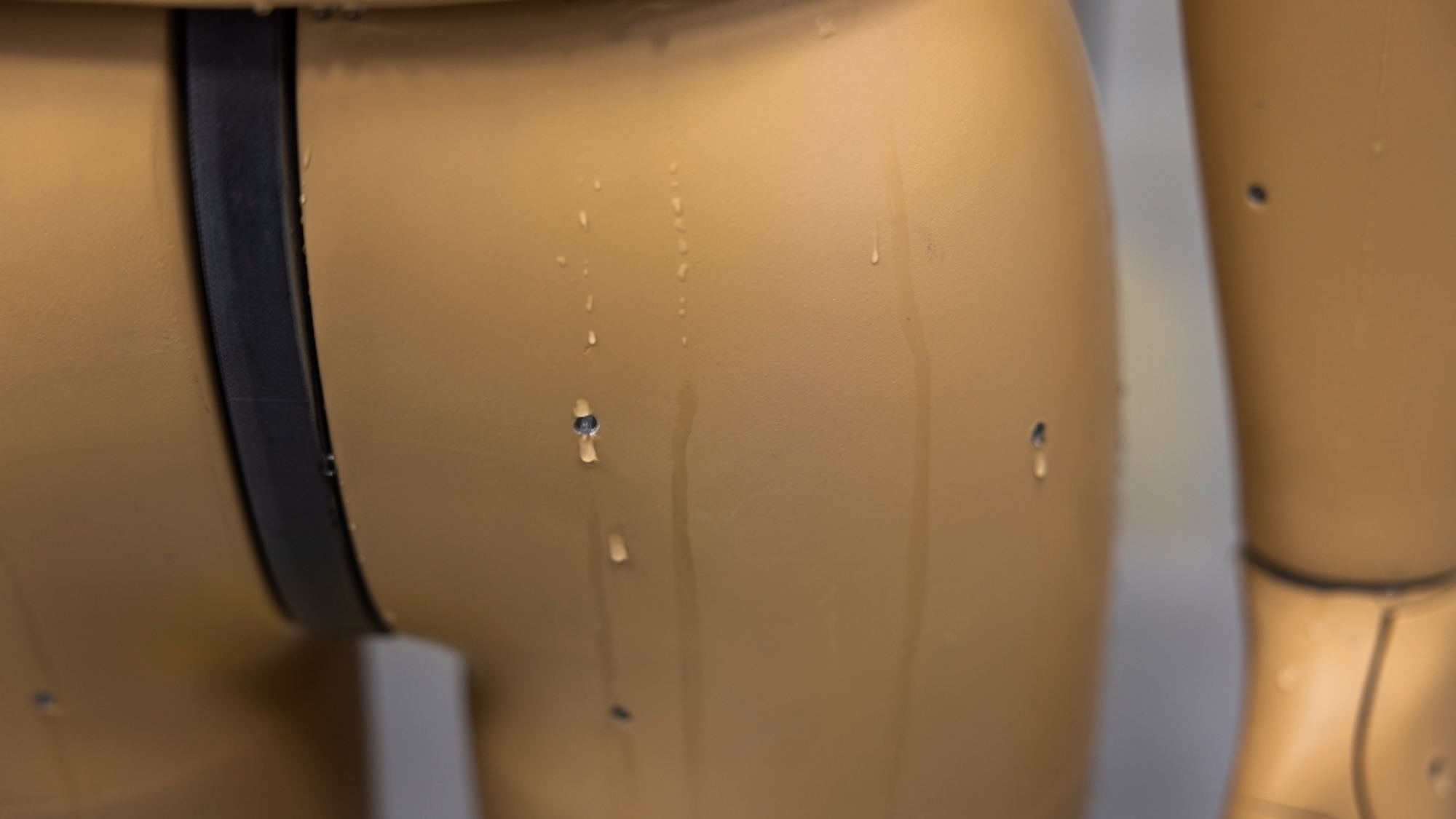

Researchers at Arizona State University are employing a breathing, perspiring, humanoid robot to study extreme temperatures’ effects on the body—including, yes, butt sweat. But as uncanny as ANDI (and its rear end) may look, the device could help experts better devise products, methods, and treatments to keep populations safe as the planet continues its dangerous, climate change-induced warming patterns.
Aside from such visible, sometimes socially awkward physical signs of heat stress, there’s actually a lot that experts still don’t know about humans’ biological reactions to high temperatures. But researchers like Jenni Vanos, an associate professor in ASU’s School of Sustainability, can’t simply plop test subjects into dangerously extreme heat scenarios and observe the dire effects. “There are situations we know of… where people are dying of heat and we still don’t fully understand what happened,” Vanos said in a recent statement. “ANDI can help us figure that out.”
[Related: 1 in 5 people are likely to live in dangerously hot climates by 2100.]
Funded by a National Science Foundation Major Research Instrumentation Grant and custom-built by Thermetrics, ASU’s ANDI is one of only two currently deployed at a research institution. It’s also the first thermal manikin capable of being used outdoors, thanks to a novel internal cooling channels. Within this unique system, cool water circulates throughout ANDI’s “body” to keep its overall temperature low enough to endure extreme heat, while sensors measure numerous variables influencing human perceptions of heat, such as sun brightness and air convection.
These perceptions are as varied as humans’ health and body types are—something ANDI can easily accommodate. “We can [enter] different BMI models, different age characteristics and different medical conditions,” said Ankit Joshi, an ASU research scientist and lead operator of ANDI. Joshi offers a diabetes patient, who has different thermal regulation abilities as a healthy person, as an example. “We can account for all this modification with our customized models.”



ASU’s ANDI generally resides in the aptly-named “Warm Room,” a chamber built to simulate heat-exposure scenarios seen in regions around the world, which includes factors such as wind, solar radiation, and temperatures as high as 140-degrees Fahrenheit. Within the Warm Room, ANDI can accurately measure human sweating mechanics such as changing core and skin temperatures.
Outside the Warm Room, however, ANDI is reportedly getting a walking buddy. Over the summer, the research team will pair the manikin with the non-humanoid MaRTy, ASU’s biometeorological heat robot. Both machines will stroll through ASU’s (very hot) campus, with MaRTy measuring the heat that hits a body, while ANDI can record how a body reacts to said temperatures.
[Related: Heat is the silent killer we should all be worried about.]
There is no single solution to adapting to rising temperatures, and researchers are well aware of this. “We’re trying to approach this from a very holistic point, but there’s not going to be a silver bullet for anything,” said Konrad Rykaczewski, an associate professor in ASU’s School for Engineering of Matter, Transport and Energy and the study’s principal investigator. Such varying options include designing better cooling clothing, or even exoskeleton backpacks made specifically to help cool down its wearers.
